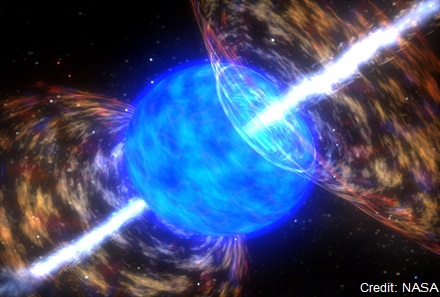
Since the neutrinos point back directly to their sources - they are neither deflected by magnetic fields, nor scattered or easily absorbed - the recent discovery of cosmic neutrinos of presumably extragalactic origin opens new ways to search for the most powerful accelerators in the Universe. Neutrinos are also interesting from the particle physics perspective as their properties are not yet fully understood, and they may test new effects only showing up at extreme distances, energies, or densities.
The NEUCOS-project focuses on the connection between neutrinos and cosmic rays with special attention to multi-disiplinary challenges requiring the expertise from both particle physics and astrophysics. One example is the efficient description of cosmic ray accelerators producing heavier nuclei and, possibly, neutrinos. Another example is the study of neutrino properties in ice or sea water, using the same infrastructure as the cosmic neutrino observations.
The project is funded as ERC Consolidator grant to DESY astroparticle theorist Walter Winter by the European Union within the framework programme “Horizon 2020” with a total budget of 1.75 million Euros over five years, starting in September 2015.





